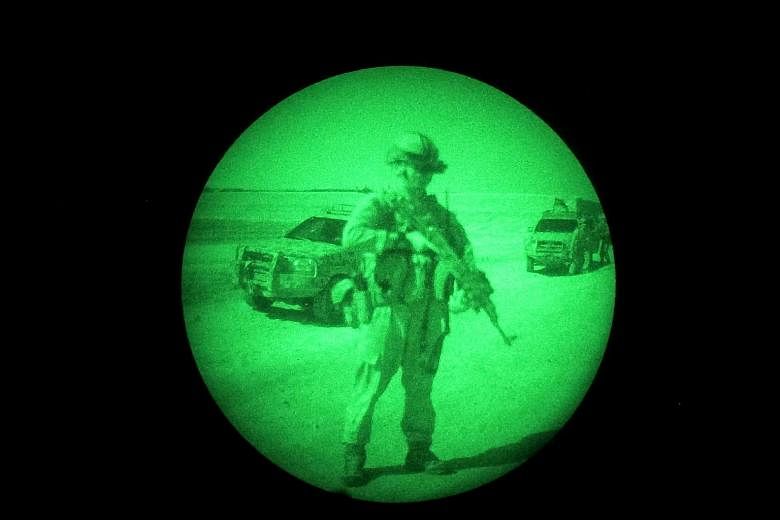LOGAR PROVINCE (Afghanistan) • Nato forces have begun a new programme to train Afghan soldiers to pinpoint ground targets for aircraft flying overhead.
They are hoping that it will help stem militant advances in recent months and reverse a sharp rise in civilian casualties.
The alliance has shifted most military responsibility on to Afghanistan's armed forces since it ended its main combat mission after 2014, including building up air capabilities that are crucial to holding back Taleban gains.
A growing number of mainly small Afghan aircraft have been firing increasingly powerful weapons at militants with little or no guidance from the ground, a problem that US advisers like Lieutenant-Colonel Andy Janssen are trying to address.
"When you're in the air, the picture of what's going on is vastly different than when you're on the ground," he said during a recent training exercise in Logar province, just south of the capital Kabul.
"The ability to talk a pilot's eyes to the target effectively is huge. The effectiveness of the strikes goes up exponentially when you do that."
About 60 students are currently at various levels in the programme, with officials hoping to field nearly 100 so-called Afghan Tactical Air Controllers by March next year, in time for an expected seasonal upswing in Afghan Taleban fighting after mountain snows melt.
While air "spotters" are no guarantee that the right target will be hit, greater accuracy from air strikes is crucial on two fronts.
Afghan ground forces have struggled to contain a stubborn insurgency that is fighting to topple the Western-backed government and drive out foreign troops, and their reliance on effective air support is increasing.
And civilian casualties from air strikes have spiked this year, with 133 Afghans killed and 159 wounded in the first nine months, up 72 per cent from the same period a year ago.
While no separate data was available for attacks carried out by Afghan, US or Nato aircraft, the United Nations said two-thirds of this year's civilian casualties were caused by the local air force.
The UN also said Afghanistan had 41 aircraft capable of conducting air strikes by June, up from 28 at the end of last year.
REUTERS

